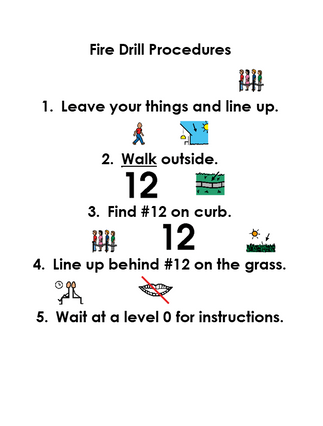In the busy world of education, classroom management often takes the spotlight. Still, even with the best intentions, many teachers find themselves caught in common traps that can throw off even the best-planned lessons. Are you accidentally overwhelming your students with complicated procedures? Or maybe you and your paraprofessionals aren’t on the same page, causing confusion and inconsistency? Let's explore the key classroom management mistakes that can block student success and find practical strategies to turn your classroom into a place of clarity and support.

You didn't explicitly teach procedures.
A common mistake teachers make is not breaking down procedures into step-by-step, manageable parts. Many of our students with disabilities need support with multistep directions. Sometimes, we get ahead of ourselves and spit out multiple steps of a routine and assume that our students can follow along, but remember it's best to provide one step at a time until routines are solid.
Make sure your procedures are not too complex. Whenever possible, simplify the steps so that they are clear and easy to follow. If a procedure has too many steps, consider breaking it into two different routines.
You're overwhelming your students with too many new procedures.
Remember that students can get overwhelmed if you teach too many procedures at once. Teach procedures gradually and continue practicing until they are mastered. In addition, you need to enforce the procedures all day, every day. Students will not see the importance of a procedure if it is not enforced every time.
Your support staff are not following through with expectations.
Lack of consistency can cause tons of problems with classroom management. You know that student that will only get his work done when you're working with him? But anytime he's with an aide, he runs all over her? That's because you're consistent, and she is not. Or vice versa in some situations...
We have to teach our students the expectations, but we also have to teach our staff so they can hold students to the same accountability level. And we must give them the tools to do so. Classroom management and behavior strategies can take time to learn and feel confident. Provide feedback to your paras and ensure that all staff are on the same page to increase consistency.
Your students are not attending to your directions.
This one may seem minor, but we will not see follow-through if we don't have a student's attention before providing a direction or a task demand. If we expect students to respond a certain way, gaining their attention and then setting the expectation is the only way we will see success.
For whole class transitions and procedures, one ideal way to gain students' attention is through an attention signal. I used "Give Me 5" in my classroom. You can download a set of posters in the free resource library to try it out.
You rushed through and didn't practice enough.
Another mistake I commonly see when visiting classrooms is teaching the procedure for a day or two and then moving on. Classroom management is an all-year process. You will need to continue teaching and reviewing procedures and routines during the first few weeks of school, after long breaks, and at other points in the year when student behaviors start to pop up.
You're talking too much.
Visuals, visuals, or visuals. Take the extra time to create visual supports for your classroom procedures and post them in your classroom. This will make it much easier for your students to follow along and remember procedures. Some students may need visual supports all year, so visuals on a keyring that attach to your lanyard are a great option for on the go.
Good classroom management is all about clearly teaching and reinforcing procedures. Don't miss how important it is to break down complicated routines into easy steps. Introduce your procedures gradually and keep expectations consistent. It’s just as important for support staff to be on the same page so students get consistent guidance. Getting students’ attention before giving directions and using visual aids can really help them understand and remember what to do. And finally, remember that classroom management isn’t a one-time thing; it needs ongoing practice and reinforcement throughout the school year.












Comments